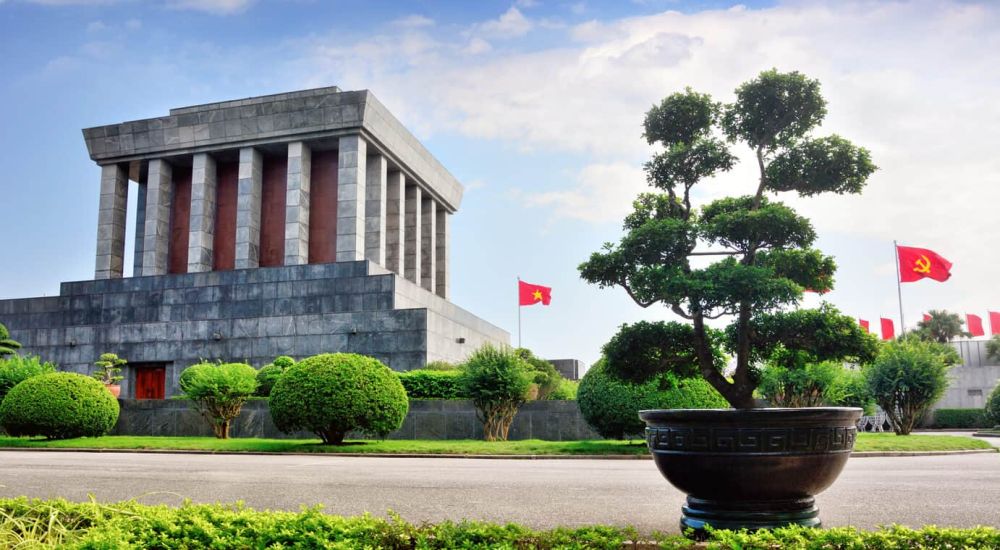

The Ho Chi Minh Mausoleum in Hanoi stands as a monumental edifice dedicated to the late Vietnamese leader, Ho Chi Minh, who was a key figure in Vietnam's history, leading the country to independence. Since its inauguration, the mausoleum has been a focal point of reverence and national pride, attracting tourists from around the world.
The mausoleum's construction began in 1973 and it was formally inaugurated on August 29, 1975, making it a relatively recent addition to Vietnam's historical attractions. Despite its modern inception, the site holds a deep historical significance as it enshrines the embalmed body of 'Uncle Ho,' as he is affectionately known, in a glass sarcophagus. The site has since become an essential stop for visitors seeking to understand the national heritage and revolutionary history of Vietnam.
Tourism at the Ho Chi Minh Mausoleum has evolved significantly over the years. Initially, the site primarily attracted domestic visitors and revolutionary pilgrims paying homage to Ho Chi Minh. However, as Vietnam opened up to international tourism in the 1990s, the mausoleum gained recognition as a must-visit destination for foreign tourists.
The Vietnamese government has actively promoted the mausoleum, recognizing its potential to educate visitors about Vietnam's struggle for independence and Ho Chi Minh's ideologies. Over the years, the site has become an integral part of Hanoi's tourism circuit, drawing interest from history buffs, cultural enthusiasts, and political scholars alike.
Tourists visiting the mausoleum can expect a solemn and respectful atmosphere, as the site is considered sacred by many Vietnamese. Visitors often partake in a procession to view Ho Chi Minh's body, which is maintained under strict conditions. The mausoleum complex also includes the Presidential Palace and Ho Chi Minh's Stilt House, providing a broader understanding of the leader's life and work.
In recent years, there has been an emphasis on responsible tourism at historical sites such as the Ho Chi Minh Mausoleum. Efforts are being made to preserve the solemnity and historical integrity of the site while accommodating increasing numbers of visitors. There is also a trend towards combining visits to the mausoleum with other cultural and educational experiences in Hanoi, such as museum tours and culinary explorations.
Additionally, with the rise of social media, the Ho Chi Minh Mausoleum has become a popular backdrop for tourists seeking to capture their travels on platforms like Instagram and Facebook, thereby raising its profile among younger generations.
Looking ahead, the Ho Chi Minh Mausoleum is expected to remain an important symbol of Vietnam's history and a pivotal attraction in Hanoi's tourism offerings. Efforts to preserve the site and enhance the visitor experience will likely continue, ensuring it endures as a place of education and remembrance for future generations.